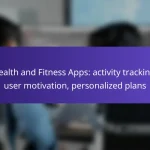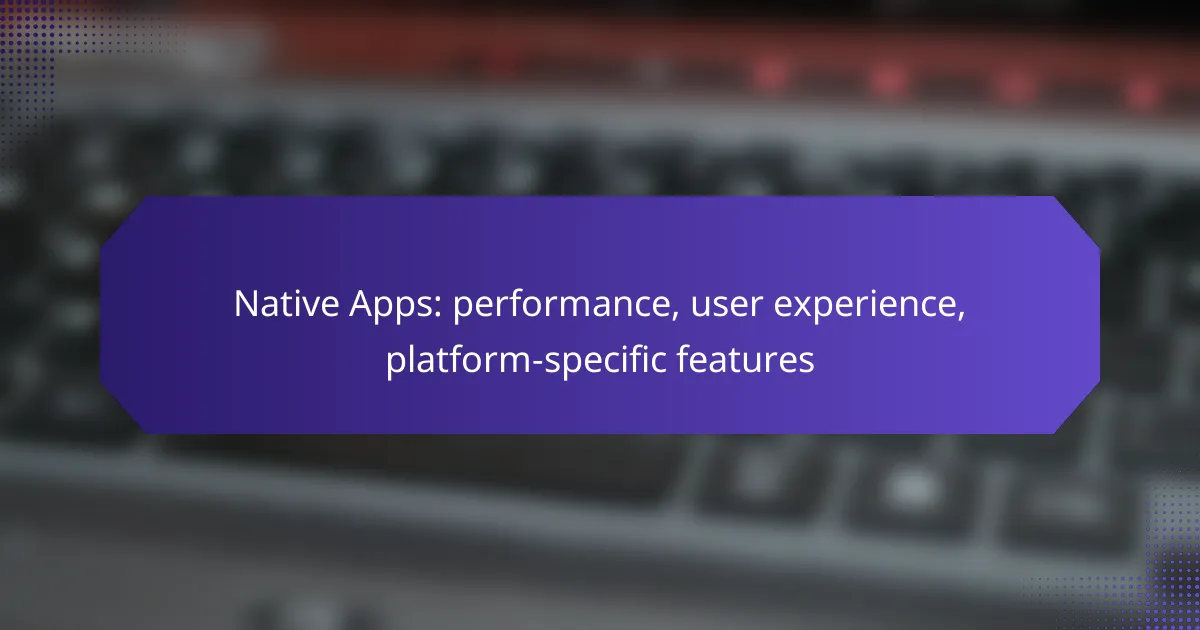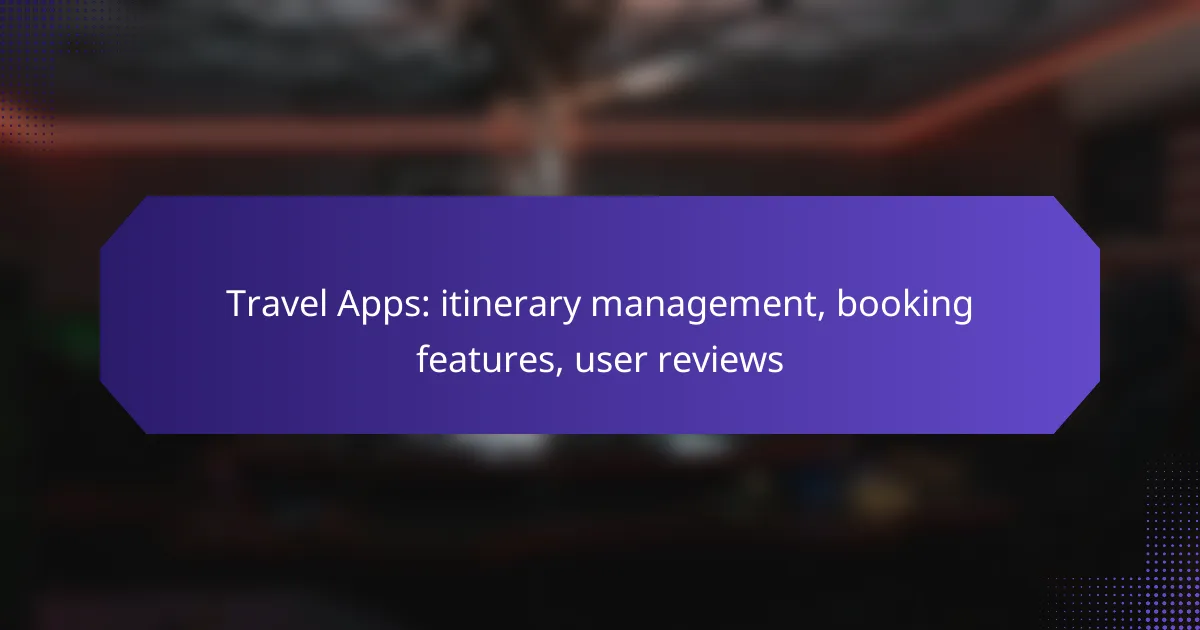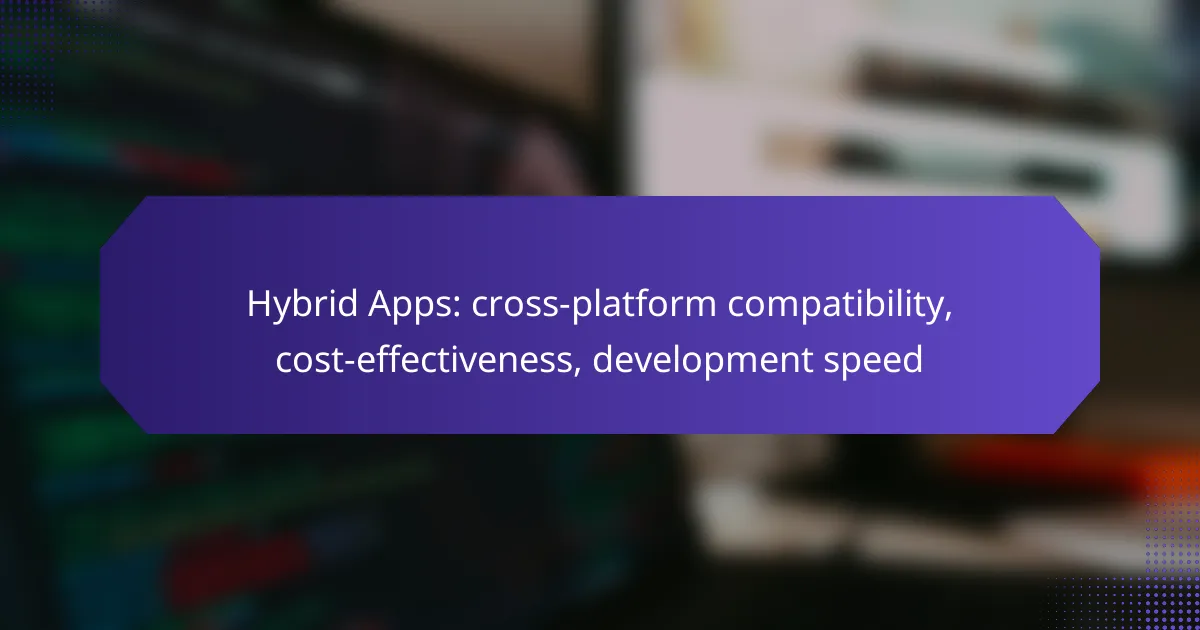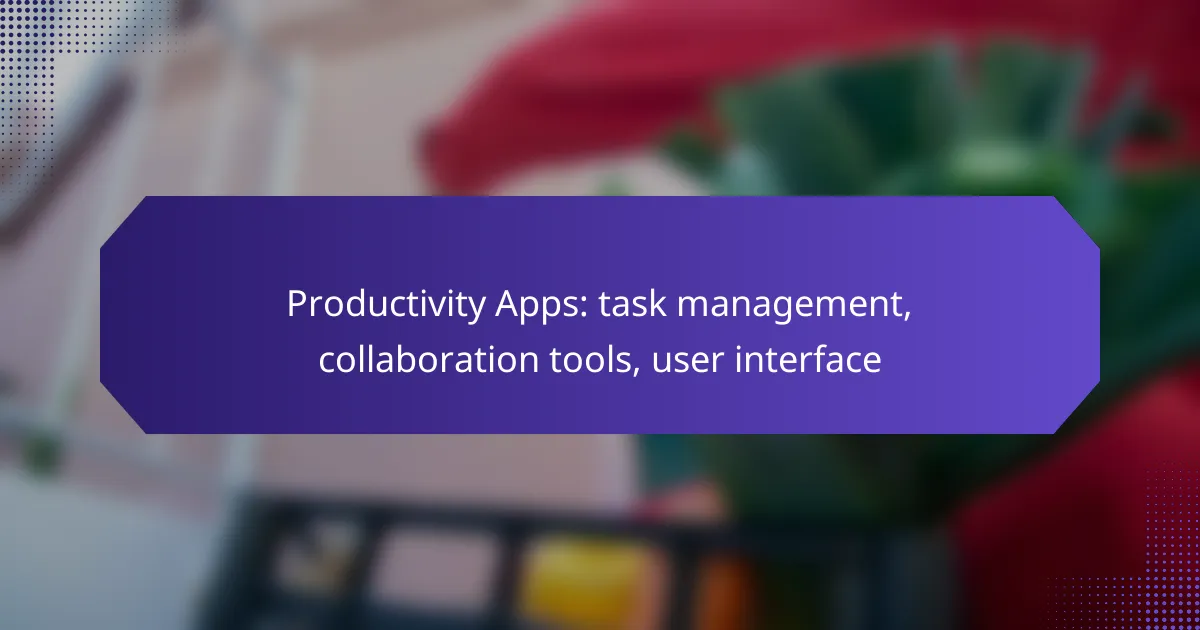Native apps are designed to maximize performance by utilizing device-specific features and optimizing resource management, leading to a smoother and more efficient user experience. By aligning with platform standards, these applications offer faster interactions and intuitive usability, ultimately enhancing user satisfaction and engagement.

How do native apps enhance performance in the UK market?
Native apps significantly enhance performance in the UK market by leveraging device-specific capabilities and optimizing resource usage. This results in a smoother user experience, faster interactions, and better overall efficiency compared to web-based applications.
Optimized resource usage
Native apps are designed to utilize the device’s hardware and software resources effectively. By accessing system-level features, such as the processor and memory, they can manage resources more efficiently than hybrid or web apps. This optimization leads to less battery drain and improved performance, particularly on mobile devices.
For example, a native app can directly interact with the camera and GPS, providing real-time data without the lag often seen in non-native applications. This is crucial for applications that require quick responses, such as navigation or augmented reality apps.
Faster load times
Native apps typically experience faster load times due to their ability to store data locally on the device. This means that users can access content without waiting for data to be fetched from the internet, which is especially beneficial in areas with poor connectivity.
In the UK, where mobile internet speeds can vary, having a native app can significantly reduce the time users spend waiting for content to load. Users often expect apps to load in seconds, and native apps can meet this expectation more reliably than web-based alternatives.
Improved responsiveness
Native apps offer improved responsiveness by providing a more fluid and interactive user experience. They can react to user inputs instantly, thanks to their direct integration with the device’s operating system. This responsiveness is vital for maintaining user engagement and satisfaction.
For instance, gestures like swiping and tapping are processed more quickly in native apps, allowing for seamless navigation. In contrast, web apps may lag due to reliance on browser rendering, which can frustrate users and lead to higher abandonment rates.

What user experience benefits do native apps offer?
Native apps provide a superior user experience by leveraging the specific capabilities of the device they operate on, resulting in faster performance and more intuitive interactions. These apps are designed to meet user expectations based on the platform’s standards, enhancing usability and satisfaction.
Intuitive navigation
Native apps typically feature navigation that aligns with the operating system’s design guidelines, making it easier for users to understand and use the app. For example, iOS apps often utilize tab bars and swipe gestures, while Android apps may incorporate navigation drawers and back buttons. This familiarity reduces the learning curve and allows users to engage with the app more naturally.
To optimize navigation, consider using common patterns familiar to users of the specific platform. Avoid overly complex structures that can confuse users and lead to frustration.
Personalized features
Native apps can offer personalized experiences by accessing user data and preferences stored on the device. This allows for tailored content, such as recommendations based on previous interactions or location-based services that enhance relevance. For instance, a fitness app might suggest workouts based on the user’s activity history and location.
When implementing personalization, ensure that you respect user privacy and comply with regulations like GDPR. Always provide users with options to manage their preferences and data sharing.
Seamless integration with device capabilities
Native apps can fully utilize device features such as the camera, GPS, and push notifications, creating a more engaging experience. For example, a photo editing app can directly access the camera for instant captures, while a navigation app can provide real-time directions based on the user’s location. This integration enhances functionality and user satisfaction.
To maximize the benefits of device integration, focus on features that add real value to the user experience. Avoid excessive permissions that may lead to user distrust or app abandonment. Always communicate clearly why certain permissions are needed and how they enhance the app’s functionality.

What platform-specific features are available in native apps?
Native apps leverage platform-specific features to enhance performance and user experience. These features include direct access to hardware, utilization of native user interface components, and enhanced security measures tailored to the operating system.
Access to hardware functionalities
Native apps can directly access device hardware such as cameras, GPS, and accelerometers, allowing for seamless integration of features like location tracking and image capture. This direct access often results in faster response times and improved overall performance compared to web apps. For instance, a fitness app can use the accelerometer to track steps accurately, providing real-time feedback to users.
Utilization of native UI components
By using native UI components, apps can offer a look and feel that aligns with the platform’s design guidelines, enhancing user familiarity and satisfaction. This includes elements like buttons, sliders, and navigation bars that behave consistently with other apps on the device. For example, an iOS app can utilize UIKit components to ensure that the app feels integrated into the Apple ecosystem, which can lead to higher user retention.
Enhanced security measures
Native apps benefit from built-in security features provided by the operating system, such as biometric authentication and secure data storage. These measures help protect sensitive user information and enhance trust. For example, apps on Android can use Google Play Protect to scan for vulnerabilities, while iOS apps can implement Face ID or Touch ID for secure logins. Developers should prioritize these features to comply with regulations and ensure user data safety.

How do native apps compare to web apps in the UK?
Native apps typically offer superior performance and user experience compared to web apps in the UK. They leverage device-specific features and capabilities, leading to faster load times and enhanced functionality.
Performance differences
Native apps are designed specifically for a particular platform, allowing them to utilize device hardware and software more efficiently. This results in quicker response times and smoother animations, often achieving load times in the low tens of milliseconds.
In contrast, web apps rely on browser capabilities, which can introduce latency and performance bottlenecks. For example, a native app may perform complex tasks in real-time, while a web app might experience delays due to network speed or browser limitations.
User engagement levels
Native apps generally foster higher user engagement compared to web apps. They can send push notifications directly to users, keeping them informed and encouraging regular interaction.
Moreover, native apps often provide a more intuitive user interface that aligns with platform-specific design guidelines, enhancing the overall user experience. This can lead to increased retention rates, with native apps often seeing engagement levels that are significantly higher than those of web apps.
Development costs
Developing native apps can be more expensive than creating web apps due to the need for separate codebases for each platform, such as iOS and Android. Costs can range from several thousand to tens of thousands of pounds, depending on the app’s complexity and features.
On the other hand, web apps typically have lower development costs since they use a single codebase that works across multiple platforms. However, businesses should consider the long-term benefits of investing in native apps, as they may yield higher returns through better performance and user engagement.

What are the key considerations for choosing native app development?
Choosing native app development involves evaluating factors such as target audience needs, budget constraints, and long-term maintenance. These considerations directly impact the app’s performance, user experience, and ability to leverage platform-specific features.
Target audience needs
Understanding the target audience is crucial for native app development. Different user demographics may prefer specific platforms, such as iOS or Android, which can influence design and functionality choices. Conducting user research can help identify preferences and behaviors that shape the app’s features.
For instance, if your audience primarily uses iOS devices, focusing on Apple’s design guidelines and capabilities will enhance user satisfaction. Conversely, if the target group favors Android, consider incorporating features like customizable interfaces and integration with Google services.
Budget constraints
Budget is a significant factor when deciding on native app development. Developing separate apps for iOS and Android can be costly, often requiring a larger initial investment compared to cross-platform solutions. It’s essential to assess the financial resources available and the expected return on investment.
Consider the cost of hiring specialized developers, as native apps typically require expertise in specific programming languages, such as Swift for iOS and Kotlin for Android. A clear budget plan can help prioritize features and determine whether to launch on one platform initially or both simultaneously.
Long-term maintenance
Long-term maintenance is another critical consideration in native app development. Native apps require ongoing updates to ensure compatibility with new operating system versions and to address user feedback. This can lead to additional costs and resource allocation over time.
Plan for regular maintenance cycles and updates, which may include bug fixes, performance enhancements, and new feature integrations. Establishing a dedicated team for ongoing support can help maintain app quality and user engagement, ultimately contributing to the app’s success in the market.

What are the emerging trends in native app development?
Emerging trends in native app development focus on enhancing user experience and leveraging advanced technologies. Key areas include the integration of artificial intelligence and the growing emphasis on augmented reality features.
Increased use of AI features
The integration of AI features in native apps is transforming user interactions and functionality. Apps are increasingly utilizing machine learning algorithms for personalized experiences, such as tailored recommendations and predictive text input.
Consider implementing AI to analyze user behavior and preferences, which can enhance engagement. For instance, chatbots powered by AI can provide instant customer support, improving overall satisfaction.
However, developers should be mindful of data privacy regulations, such as GDPR in Europe, when collecting and processing user data for AI functionalities.
Focus on augmented reality
Augmented reality (AR) is becoming a significant trend in native app development, offering immersive experiences that blend digital content with the real world. Apps in sectors like retail and gaming are leveraging AR to create interactive environments that engage users more deeply.
For example, retail apps allow users to visualize products in their own space before purchasing, enhancing decision-making. Developers should consider the hardware capabilities of target devices to ensure smooth AR experiences.
When incorporating AR, it’s essential to optimize performance and battery usage, as AR applications can be resource-intensive. Testing on various devices can help identify potential issues early in the development process.



